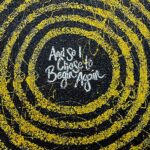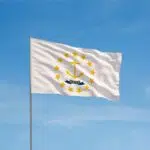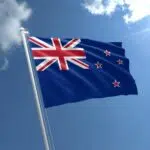New Zealand Sign Language Week is generally celebrated in the second week of May, which is from May 4 to 10 this year. The theme for this year is “Essential.” It stresses the importance of providing effective communication for people with deafness and impaired hearing, whether in workspaces or in society in general.
This year New Zealand Sign Language Week will focus on raising more awareness of issues, preconceptions, and discrimination deaf people face, while also providing a space to celebrate the rich history of the language and community. Of course, classes and free lessons will be available throughout the Week to try and learn some common signs and be a part of positive change!
History of Sign Language Week
Although New Zealand Sign Language Week is a chance for people to connect and celebrate a rich history and culture, the road to get to this point was not smooth. In New Zealand, sign language was only recognized as an official language in 2006, and before that, those who created and used the language faced discrimination and gatekeeping.
The first known appearance of sign language in New Zealand matched the arrival of early British immigrants in 1868. A woman named Dorcas Mitchell was the first known teacher of sign language in the country and had taught a total of 44 pupils by 1877. She taught her pupils British Sign Language. In 1878 the first school for deaf children was opened and Mitchell put her name forward for the role of principal but was not chosen in favor of a man who advocated for deaf children to be taught orally without sign language. The new principal did not even consider admitting children who communicated by signing and so the children of the school were forced to sign in secret. This led to an entire generation of children developing sign language in secret without any adult interference.
Years later, this sign language was recognized as a full-fledged language in 2006. It was named the New Zealand Sign Language and was once again instituted in schools. A year later, the first Sign Language Week took place, containing educational and awareness events.
It was only after decades of advocating and fighting for their right to speak and be listened to that those who used sign language were finally recognized and respected as equal members of society. There are still problems and a lack of awareness surrounding sign language and hearing impairments. The road is only still being paved and we need to do our best to ensure it’s a smooth one.
Sign Language Week timeline
Dorcas Mitchell arrives in New Zealand and starts teaching the children how to sign.
In her Ph.D. thesis, Marianne Ahlgren proves that New Zealand Sign Language is a real language because of its consistent grammar rules and large vocabulary.
New Zealand Sign Language becomes the third official language of New Zealand in addition to English and Māori.
A year after the official recognition, the week-long awareness and educational event is held.
Sign Language Week FAQs
Is there a difference between sign languages?
Yes, although there are similarities between most of them they are also all unique and entirely determined by the people and region they’re used in.
How do I learn sign language?
Generally, a company or school for the deaf will offer classes or a short course on the sign language of your region. There are also free videos and courses online.
Is Sign Language Week an international holiday?
Yes. However, each country holds it in a different month and runs a different program.
How to Observe Sign Language Week
Learn to sign
Take your first lessons to learn basic sign language. Accessible lessons are everywhere during the Week.
Donate to the cause
If you have the income and the inclination, why not donate to Deaf Aotearoa to help fund equal opportunities? Any amount helps.
Join the cause
If you’re low on funds but high on motivation, why not consider helping Deaf Aotearoa with their fundraising efforts? Their website tells you what you need to know to help.
5 Facts About Deafness You Need To Know
Not enough aid
No more than 17% of those who need hearing aids get them.
Earlier is better
The earlier a child is diagnosed with hearing problems, the more likely they are to receive the treatment and support they need to live healthy lives.
Number two disability
In the U.K. alone, there are roughly 11 million people who suffer from hearing loss.
The football huddle
In 1892, Paul Hubbard and his team huddled together to stop the opposing team from seeing what he was signing to them.
Smurfs
In an episode of “The Smurfs,” there was a character that communicated with sign language, teaching the Smurfs and the audience a few basic words.
Why Sign Language Week is Important
Progress
Although it took decades of hard work to get to this point and it will still take years to get to where we should be, it’s still important to celebrate how far we’ve come. We love progress in all its forms!
Language and culture
The event not only draws attention to sign language but also highlights the culture of deaf people within New Zealand. People with hearing impairment have their own experiences and knowledge to share with others.
We love to learn
For anyone that’s thought about learning sign language, now is a perfect time. This week could be the spark for you to learn how to say hello to everyone you meet, regardless of whether they can hear you or not.
Sign Language Week dates
| Year | Date | Day |
|---|---|---|
| 2024 | May 6–12 | Monday–Sunday |
| 2025 | May 5–11 | Monday–Sunday |
| 2026 | May 4–10 | Monday–Sunday |



































